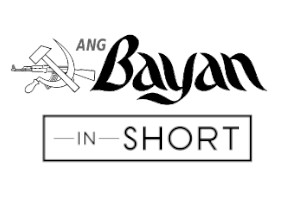The bitter situation of tuna handliners

A tuna handliner must possess high levels of skill and patience in order to catch a large and quality tuna. The tuna must be handled extra carefully as its price goes down if its meat is bruised or damaged. If they have no or few catch, they go home with empty pockets.
This is the situation of workers in handline fishing of tuna in General Santos City. Although there are more advanced and quicker methods, traditional handlining is considered the best and careful method for catching select types of yellowfin tuna.
Handliners are concentrated in the city’s tuna industry. There are 3,500 vessels involving 71,000 fishermen. Among the biggest handlining operators are individuals and companies which also own purse seiner units.
In 2020, handliner products reached 59,618 metric tons (MT) or 23.4% of the total 254,779.32 MT docked in the city. The bulk of this are high quality fresh, cold or iced fish (42,445 MT) and smoked products (3,420 MT). These are valued at $136.5 million or ₱7 billion.
Exploitation, indebtedness and oppression
There are two kinds of handliners. There are the palaran who fish in municipal waters within 15 kilometers from shore. They use small-engined boats and can only stay asea for one night.
Then there are the pamariles who use large pumpboats or fishing vessels and can sail to the Philippine southern seas and beyond the country’s territories. These tug along smaller boats (kawa-kawa) for handlining, and supported by larger vessels (pakura). These are manned with eight to 20 seafarers, depending on the size of the boat. These can last 10 days to three months asea.
Bilateral agreements on international fishing do not cover hand-lining operations. Because of the diminishing volume of fish in the country’s seas, pamariles fishers are forced to take chances in the seas of Indonesia, Papua New Guinea, Australia, Palau and Fiji. Other than the dangers of rough seas, they also face threats of pirates and other criminal elements which they might encounter at sea.
They also lack safety equipment and training for using these, often resulting in accidents involving deaths and serious injuries.
Overall, handliners are employed under the cabo system, although illegal under the law. There are no formal terms of employment. They are not treated as employees by their bosses, rather, “co-investors” and their wages vary every voyage. This is despite the fact that they have been working for more than 10 years under one particular operator.
They do not receive minimum wages or benefits with operators reasoning that the the volume of their catch, and their earnings are not fixed. A sharing system (“nilima”) is often implemented with workers receiving 20% of the overall income. The entire cost of production is taken from the overall income. The balance (usually around 50%) are “clean profits” that go to the boat operator and owner. Often, it is also the boat owner and operator who buy the tuna catch and sell it at very high prices in the market.
Because their income is not enough, fisherfolk often borrow money from their operators, stores, or local loan sharks. Prices of commodities are jacked up by 20%. Because wages are grossly inadequate, they are forced to get an “advanced” or initial payment, further pulling down their income.
In the case of the palarans, businessmen pull down the prices of their tuna catch. They claim that high petroleum prices are the cause of high tuna prices but do not actually increase the buying price from fishermen.

